Muscle Imbalance
Table of Contents
Description
Muscle imbalance refers to a disparity in strength, flexibility, or coordination between opposing muscle groups or different muscles in a group. It’s a common problem that can be caused by a variety of factors, including sitting, poor posture, repetitive motions, and a lack of a balanced exercise routine.
Muscles usually work in pairs, with one muscle group responsible for movement in one direction and its opposite group in the opposite direction. When a muscle is out of balance, it means that one muscle group is stronger or tighter than the opposite group, causing an imbalance of normal forces around the joint.
Anatomy of muscle imbalances
Muscle imbalances can occur in different areas of the body, and the specific anatomy of the imbalance depends on the muscle groups involved. Here are some examples of muscle imbalances in different areas:
Upper body:
Round shoulders:
- This imbalance is associated with tension in the muscles in the front of the shoulders (eg, pectoralis major) and weakness in the muscles of the upper back (eg, rhombuses, middle trapezius).
- This can lead to a forward head and rounded shoulder position.
Upper Sacral Syndrome:
- This involves tension in the muscles of the neck and front of the chest (eg, sternocleidomastoid, pectoralis major) and weakness in the muscles of the upper back and neck (eg, this imbalance can cause a forward head position, rounded). shoulders and a bent upper back.
Lower body:
Anterior Pelvic Tilt:
- This imbalance is characterized by tight hip flexors (eg glutes) and lower back muscles (eg erector spinae) and weak glutes (eg gluteus maximus, gluteus medius).
- This can cause an exaggerated curve in the lower back and a forward-tilted pelvis.
Lower Sacral Syndrome:
- This involves tightness in the hip flexors and lower back muscles, as mentioned above, along with weakness in the abdominal muscles (such as the transversus abdominis) and glutes.
- This imbalance can lead to lower back pain, weak abdominal muscles, and slouched posture.
Core:
Core muscle weakness:
- Imbalances in the core muscles, including the abdominals, obliques, and back muscles, can lead to poor stability and control.
- Weakness in certain core muscles can affect posture, spinal alignment, and general movement patterns.
- It is important to note that these examples are just a few common imbalances and there are many other possible muscle imbalances throughout the body.
- Each person may have unique imbalances based on their posture, movement patterns, and muscle recruitment patterns.
- Treating muscle imbalances usually involves tightening and releasing tight muscles, strengthening weak muscles, and improving overall body awareness and alignment.
- A thorough evaluation by a health professional or qualified fitness professional can help identify specific muscle imbalances and guide the development of an appropriate exercise program to effectively correct them.
Types of muscle imbalances
Muscle imbalances can be classified into different types based on the nature of the imbalance. Here are some of the more common types of muscle imbalances:
Strength muscle Imbalance:
- This type of imbalance occurs when one muscle or muscle group is significantly stronger than its opposite muscle group.
- For example, stronger quadriceps than hamstrings can cause an imbalance around the knee joint.
Flexibility imbalance:
- Flexibility imbalance occurs when there is a significant difference in flexibility or range of motion between opposing muscle groups or muscles surrounding a joint.
- For example, tight hip flexors and weak glutes can cause hip flexibility imbalances.
Activation imbalance:
- Activation imbalance involves insufficient or ineffective activation of certain muscles during movement.
- This can happen when certain muscles are inactive or not working properly, causing compensatory patterns and other muscles.
- For example, weak glutes can cause the lower back muscles to overcompensate during activities such as squatting or lifting.
Coordination imbalance:
- Coordination imbalance refers to an imbalance in the coordination and control of certain muscle groups during movement.
- This can lead to inefficient movement patterns and impaired motor control.
- For example, there is poor coordination of the muscles that stabilize the shoulder joint, causing shoulder instability or impact problems.
Postural imbalances:
- Postural imbalances involve deviations from optimal alignment and posture.
- These imbalances can be caused by muscle imbalances throughout the body, such as rounded shoulders or excessive curvature of the spine, which can be caused by a combination of weak and tight muscles in different areas.
- It is important to note that muscle imbalances are often interrelated and an individual can have different types of imbalances.
- Treating muscle imbalances usually requires a holistic approach that includes strength, flexibility, coordination, and postural correction exercises.
- Working with a qualified physician, such as a physical therapist or exercise specialist, can help identify and effectively correct certain types of muscle imbalances.
Causes of muscle imbalances
Muscle imbalances can have many causes and many factors can contribute to their development. Here are some common causes of muscle imbalance:
Sedentary lifestyle:
- A sedentary lifestyle characterized by prolonged sitting or inactivity can lead to muscle imbalances.
- Inactivity can cause some muscles to weaken and become inactive, while others remain tight or overactive.
Repetitive movements:
- Practicing repetitive movements or activities that mainly work with certain muscle groups can lead to imbalances.
- For example, people who perform repetitive movements in their work or sports without adequate variation or cross-training can develop imbalances between the muscles involved in these movements.
Poor Posture:
- Keeping poor posture over time can contribute to muscle imbalances.
- For example, constant slouching or rounding of the shoulders can cause weakness in the upper back muscles and tension in the chest muscles.
Lack of proper training:
- Inadequate or incorrect training techniques can cause muscle imbalances.
- Focusing on certain muscles and neglecting others or using incorrect forms during exercises can cause an imbalance between opposing muscle groups.
Muscle and joint injuries:
- Previous muscle or joint injuries can disrupt the normal balance between muscle groups.
- During recovery, some muscles may weaken while others compensate and become overactive, causing imbalances.
Muscle compensation:
- When one muscle or muscle group is weak or inhibited, other muscles can compensate by becoming overactive or taking on a greater workload.
- These compensatory patterns can cause imbalances and altered movement patterns.
Structural factors:
- Certain structural factors, such as leg length differences or skeletal abnormalities, can cause muscle imbalances.
- These factors can cause uneven force on muscles and joints, which over time leads to imbalance.
Aging:
- Muscle mass and strength naturally decline as we age.
- This age-related muscle loss, called sarcopenia, can lead to imbalances between different muscle groups if not treated with regular exercise and strength training.
It is important to note that individual factors and conditions can affect muscle imbalances differently in each person. A thorough evaluation by a physician or qualified fitness professional can help identify specific causes of muscle imbalances and guide the development of an appropriate treatment plan.
Symptoms of muscle imbalances
Muscle imbalances can manifest as a variety of symptoms that can vary depending on the muscles involved and the nature of the imbalance. Here are some common symptoms that may indicate a muscle imbalance:
Pain or discomfort:
- Muscle imbalances can cause localized pain or discomfort in certain areas of the body.
- This pain can be sharp, dull, or aching and range from mild to severe.
- The pain may increase with certain movements or activities.
Limited range of motion:
- Imbalances between muscle groups can lead to reduced joint flexibility and range of motion.
- This can make certain movements difficult completely or comfortably.
Postural changes:
- Muscle imbalances can affect posture, leading to visible changes in body alignment.
- Common postural changes associated with muscle imbalances include rounded shoulders, forward head position, excessive curvature of the spine, and anterior or posterior angulation of the pelvis.
Muscle weakness:
- Imbalance often refers to weak muscles that are inactive or not properly engaged during movement.
- This weakness can affect strength and overall functional ability, making tasks that require muscle activation or endurance more difficult.
Muscle tension or stiffness:
- An imbalance can cause muscle tension or stiffness, which can cause discomfort and limit the flexibility of the affected muscles.
- Tight muscles may feel tight or knotted and may be prone to spasms or spasms.
Compensatory Patterns:
- When an imbalance occurs, the body can compensate by changing movement.
- This can lead to over-reliance on certain muscles or muscle groups, resulting in overuse or fatigue, while others remain underused.
Joint instability:
- Muscle imbalances can compromise joint stability and increase the risk of injury.
- Weak muscles may not provide sufficient support to the joints, making them more prone to sprains, strains, or dislocations.
Performance limitations:
- Muscle imbalances can affect athletic performance, coordination, and general functional abilities.
- People with imbalances may have reduced strength, reduced flexibility, or difficulty making precise movements.
It is important to note that these symptoms are general indicators of muscle imbalance and the specific symptoms experienced may vary from person to person. If you suspect that you have a muscle imbalance or are experiencing any of these symptoms, it is recommended that you seek evaluation and guidance from a healthcare practitioner, likely a physical therapist or sports medicine specialist. They may give a comprehensive evaluation and develop an appropriate treatment plan to correct imbalances and relieve symptoms.
Differential diagnosis
When evaluating and diagnosing muscle imbalances, it is important to consider other possible causes of symptoms and rule out alternative diseases. Here are some conditions that may have symptoms similar to muscle imbalances and should be considered in the differential diagnosis:
Muscle strain or sprain:
- Muscle strain or sprain can cause pain, limited range of motion, and muscle weakness, such as muscle imbalances.
- These injuries are often caused by sudden strain, trauma, or incorrect movements.
Tendinitis:
- Tendinitis refers to inflammation of the tendon, which can cause pain, tenderness, and limited joint mobility.
- Overuse or repetitive movements can contribute to tendinitis.
Sprained ligaments:
- Sprained ligaments occur when a ligament is stretched or torn, usually due to sudden movements or trauma.
- Ligament sprains can cause joint instability, pain, and limited range of motion.
Nerve damage or compression:
- Conditions such as herniated discs or nerve compression syndromes (such as carpal tunnel syndrome) can cause symptoms that mimic muscle imbalances.
- Entrapment or compression of the nerve can cause pain, weakness, tingling, or numbness along the affected nerve.
Joint dysfunction or osteoarthritis:
- Joint dysfunction or degenerative joint disease such as osteoarthritis can cause pain, stiffness, and limited mobility.
- These conditions can affect the balance of forces around the joint and contribute to symptoms such as muscle imbalances.
Structural anomalies:
- Certain structural anomalies, such as scoliosis, leg length differences, or joint anomalies, can affect muscle functions and cause balance disorders.
- Identifying these structural problems may require imaging studies or special assessments.
Diagnosis of Muscle imbalance
Diagnosing a muscle imbalance usually involves a comprehensive evaluation that combines a thorough medical history, physical examination, and in some cases additional diagnostic tests. Here are the main steps to diagnose a muscle imbalance:
Physician:
- A healthcare professional will review your medical history, including past injuries, surgeries, or illnesses that may contribute to muscle imbalances.
- They will also examine your symptoms, such as pain, weakness, limited movement, or functional limitations.
Physical exam:
- A healthcare practitioner will perform a physical exam that assesses your posture, movement patterns, muscle strength, and flexibility.
- hey, can check your gait, posture, and alignment and perform special tests to assess muscle strength, joint mobility, and stability.
- The exam may include palpating muscles and joints to identify areas of tenderness, tightness, or muscle imbalance.
Functional Movement Assessment:
- A functional movement assessment assesses how your body moves during various activities and identifies potential compensatory patterns or limitations.
- This will help identify specific movement disorders and imbalances that may be contributing to your symptoms.
Assessing the range of motion:
- A healthcare professional can assess the joint range of motion to identify potential limitations.
- This can help determine if muscle tension or stiffness is causing the imbalance.
Muscle testing:
- Manual muscle testing can be done to assess the strength and activation of specific muscle groups.
- This helps identify significant strength differences or imbalances between opposing muscle groups.
Postural assessment:
- Postural assessment involves observing the alignment of the body in different positions such as standing, sitting, or lying down.
- Deviations from optimal positions may indicate muscle imbalances that need to be addressed.
Diagnostic tests:
- In some cases, other diagnostic tests, such as X-rays, MRIs, or electromyography (EMG), may be ordered to evaluate the structure and function of muscles, bones, and joints.
- These tests help rule out other medical conditions that may mimic or contribute to muscle imbalances.
- Based on the results of the evaluation, the doctor can make a diagnosis of muscle imbalance.
- They identify specific muscles that are weak, tight, or imbalanced and determine how those imbalances contribute to your symptoms.
- From there, they can develop an individualized treatment plan that may include exercises, stretching, manual therapy, posture correction, and other interventions aimed at correcting imbalances and relieving symptoms.
- For accurate diagnosis and proper treatment of muscle imbalances, it is recommended to seek evaluation and guidance from a qualified physician, such as a physical therapist or sports medicine specialist.
Medical Treatment of Muscle imbalance
Medical treatment of muscle imbalances may involve a combination of measures aimed at treating the underlying cause, relieving symptoms, and promoting muscle balance and optimal function. Here are some common treatment options for muscle imbalances:
Medications:
- In some cases, over-the-counter or prescription medications may be recommended to relieve pain, inflammation, or muscle spasms associated with muscle imbalances.
- Nonsteroidal anti-inflammatory drugs (NSAIDs) or muscle relaxants may be prescribed for short-term relief of symptoms.
Injections:
- Corticosteroid injections or other types of injections may be considered in certain situations to target specific areas of pain or inflammation associated with muscle imbalances.
- These injections are usually used in conjunction with other treatments and are given by a doctor.
Modalities:
- Physiotherapy modalities such as heat or cold therapy, ultrasound, electrical stimulation, or laser therapy can be used to complete the treatment plan.
- These techniques can help reduce pain, promote tissue healing, and improve muscle function.
Bracing or tapping:
- In some cases, bracing or tapping techniques may be recommended to support proper alignment, improve posture, and reduce muscle imbalances.
- These external supports can provide feedback and support during activity, helping to correct imbalances and reduce stress on the affected muscles.
Education and Lifestyle Changes:
- Can provide education on proper body mechanics, ergonomics, and lifestyle changes to help you understand and avoid activities or habits that cause muscle imbalances.
- This may include instruction in work ergonomics, postural awareness, and strategies for incorporating regular exercise and movement into your daily routine.
- It is important to note that the specific drug treatment for muscle imbalance depends on the individual’s condition, the severity of the imbalance, and the physician’s judgment.
- The treatment plan must be tailored to address the root causes of the imbalance and the specific needs of the individual.
- Working closely with a health professional, such as a physiotherapist or sports medicine specialist, can provide appropriate guidance, monitoring, and support during treatment.
Physiotherapy exercises in Muscle imbalance
Physiotherapy exercises play an important role in correcting muscle imbalances. A physical therapist can create an individualized exercise program tailored to your imbalances, needs, and goals. These exercises usually focus on stretching tight muscles, strengthening weak muscles, improving flexibility, and improving overall muscle balance and coordination. Here are some common physical therapy exercises that may be included:
Rom exercises
ROM exercises for the upper body
When treating upper muscle imbalances, incorporating core upper body movements can help improve flexibility, mobility, and balance. Here are some basic moves that can help:
Shoulder rolls:
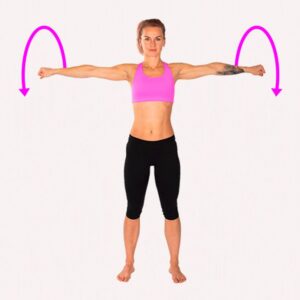
- Stand or sit tall with your arms relaxed at your sides.
- Roll your shoulders towards your ears and then roll them back in a circular motion.
- Do several reverse shoulder rolls, then reverse and roll them forward.
- Focus on relaxing and moving your neck.
Arm circles:
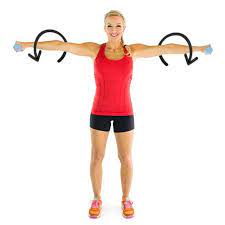
- Stand or sit tall with your arms straight at your sides.
- Make small circles with your hands and gradually increase the size of the circles.
- After a few repetitions, reverse the direction and make circles in the opposite direction.
- Focus on activating your shoulder muscles and maintaining good posture at all times.
Neck stretching:
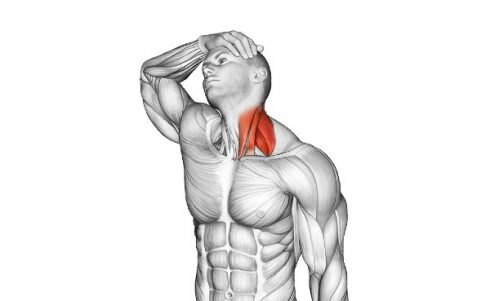
- Sit or stand with relaxed shoulders.
- Tilt your head to the right and move your right ear to your right shoulder.
- Hold the stretch for about 10-15 seconds and then return to the neutral position.
- Repeat the stretch on the left side, bringing the left ear to the left shoulder.
- You can also do forward and backward neck stretches by looking down at your chest and then gently tilting your head back.
Wrist flexibility exercises:
- Extend your right hand in front of you, palm down.
- With your left hand, gently pull your right arm back, creating tension in the wrist and forearm.
- Hold the stretch for about 10-15 seconds and then release.
- Repeat the stretch with the left arm and pull back with the right arm.
- Bangles can also be made by turning the wrists clockwise and counterclockwise.
- The purpose of these exercises is to improve the upper body’s range of motion and flexibility.
- Remember to perform the motion in a controlled and painless form.
- If you have specific concerns or limitations, it is recommended that you speak with a doctor or physiotherapist.
- They can provide personalized instruction, assess your specific imbalances, and recommend exercises and modifications to meet your individual needs.
ROM exercise for lower body:
When treating lower body muscle imbalances, basic body movements can improve flexibility, mobility, and balance. below given are some basic core exercises that may help:
Ankle circles:
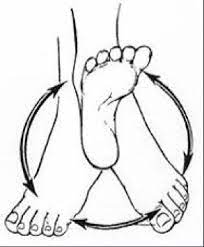
- Sit in a chair or on the floor with one leg stretched out in front of you.
- Twist your ankles in a circular motion, starting with small circles and gradually increasing their size.
- After a few repetitions, change direction and rotate the ankle in the opposite direction. Perform the exercise with the opposite leg also.
Knee extensions flexion:
- Start with sitting on a chair with both feet on the floor.
- Extend one leg straight out in front of you, lift the heel off the ground, and point the toes toward the ceiling.
- Hold the stretch for a few seconds, then bend the knee to bring the leg back to the floor.
- Repeat the exercise with the other leg, alternating leg extensions and flexions.
Hip circles:
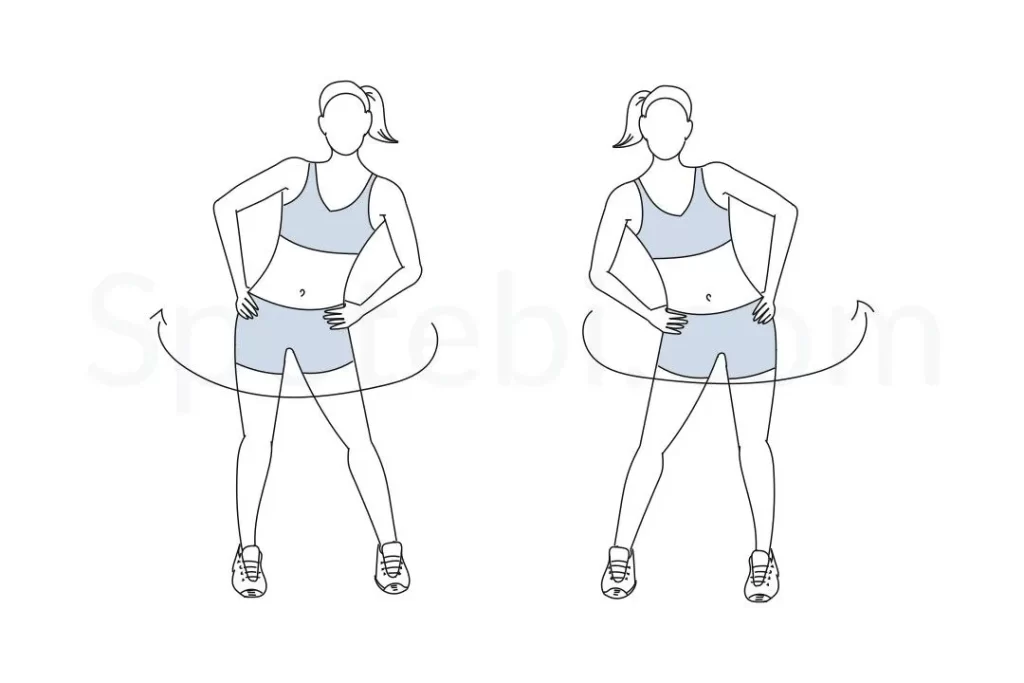
- Stand with your feet wide apart.
- Put the hands on the hips for support.
- Move your hips in a circular motion, rotating them clockwise and then counterclockwise.
- Focus on keeping your upper body still and activating your hip muscles.
Standing quad stretch:
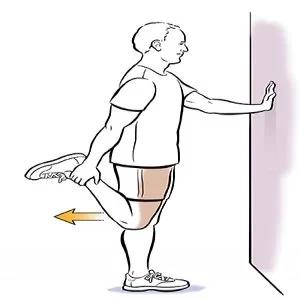
- Stand tall with your feet wide apart.
- Bend the other knee and grasp the ankle or foot with the hand on the same side.
- Slowly pull the heel toward the glutes and experience the stretch in the front of the thigh (quadriceps).
- Hold the stretch for about 10-15 seconds and then release.
- Repeat the stretch with the other leg.
- These exercises are designed to improve the range of motion and flexibility of the lower body. Remember to perform the motion in a controlled and painless manner.
- If you have specific concerns or limitations, it is recommended that you speak with a doctor or physiotherapist.
- They can provide personalized instruction, assess your specific imbalances, and recommend exercises and modifications to meet your individual needs.
ROM upper back exercise
When dealing with upper back muscles, incorporating core movements can help improve flexibility, mobility, and balance. Here are some basic upper back exercises that can help:
Neck rolls
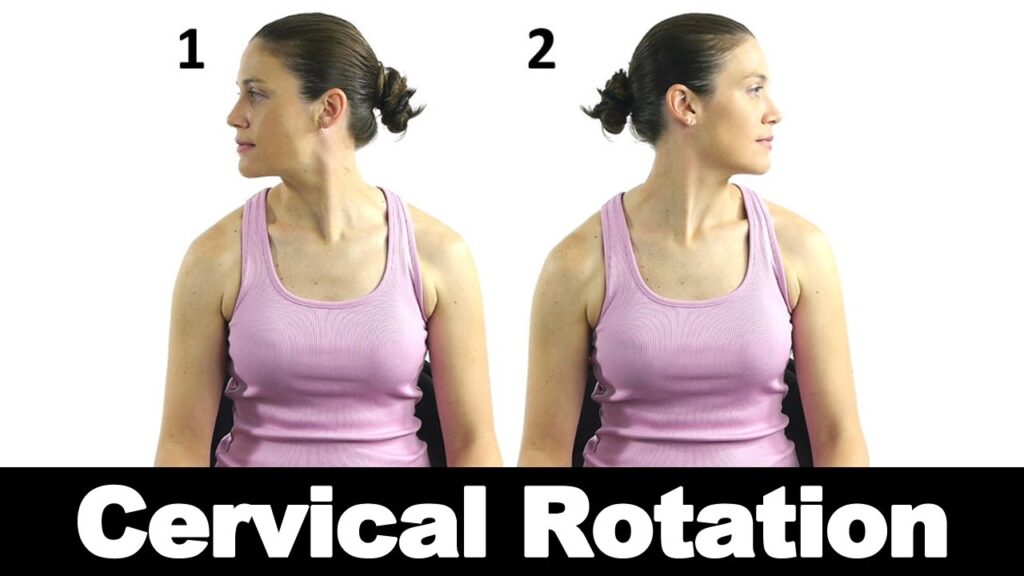
- Sit or stand with relaxed shoulders.
- Gently tilt your head to the right and bring your right ear to your right shoulder.
- Slowly turn your head forward, chin to your chest, and then to the left, bring your left ear to your left shoulder.
- Continue rolling by doing several neck rolls in one direction, then turn in the opposite direction.
Shoulders circles
- Same as above mentioned
Thoracic spine rotation:
- Sit on a chair or support ball with your feet on the floor.
- Place your hands behind your head, elbows at your sides.
- Slowly twist your upper body to the right, keeping your lower body steady.
- Turn back to the center and then turn left.
- Repeat the movement several times, focusing on the thoracic spine (middle of the back).
Chest stretch
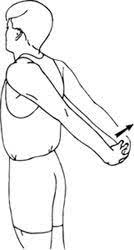
- Stand tall with your feet wide apart and your arms extended straight out to your sides, palms facing forward.
- Press your shoulders together and bring your arms as far as is comfortable.
- You should feel a stretch in your chest and in front of your shoulders. Hold the stretch for about 10-15 seconds and then release.
- Repeat the stretch several times, focusing on opening your chest and touching your upper back.
- Be sure to do these exercises in a controlled manner and without causing pain.
- If you have specific concerns or limitations, it is recommended that you speak with a doctor or physiotherapist.
- They can provide personalized instruction, assess your specific imbalances, and recommend exercises and modifications to meet your individual needs.
Lower back exercise
When treating lower back imbalances, incorporating a core range of motion can help improve flexibility, mobility, and balance. Here are some basic lower back mobility exercises that you may find useful:
When addressing muscle imbalances withinside the decreased lower back, incorporating a primary variety of movement physical games can assist enhance flexibility, mobility, and balance. Here are some decreases in the lower back primary variety of movement physical games that may be beneficial:
Cat-Camel Stretch:

- Begin for your fingers and knees in a tabletop role, together along with your fingers aligned beneath neath your shoulders and your knees beneath neath your hips.
- Slowly spherical your lower back upwards, tucking your chin closer to your chest, and feeling a stretch on your decreased lower back.
- Hold this role for some seconds, then slowly arch your lower back downwards, lifting your chest and searching barely upwards.
- Continue flowing via the movement, alternating between rounding and arching your lower back, which specializes in enticing your decrease lower back muscle tissue.
Pelvic Tilts:
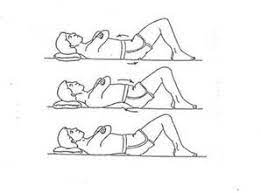
- Lie your lower back together along with your knees bent and your ft flat on the ground.
- Engage your middle and flatten your decreased lower back towards the ground with the aid of using tilting your pelvis backward.
- Hold this role for some seconds, then tilt your pelvis forward, permitting your decreased lower back to arch barely off the ground.
- Repeat the movement, flowing among posterior pelvic tilt and anterior pelvic tilt, that specialize in enticing your decrease lower back muscle tissue.
Knee-to-Chest Stretch:

- Lie for your lower back together along with your legs extended.
- Bend one knee and go it over the opposite leg, setting your foot on the floor subsequent to the alternative knee.
- Gently rotate your decreased frame closer to the aspect in which your knee is crossed, permitting your decreased lower back to twist.
- Hold this role for approximately 10-15 seconds, feeling a stretch on your decreased lower back and hips.
- Repeat on the other side after releasing the stretch.
- Remember to carry out those physical games in a managed way and without inflicting any pain.
- If you’ve got any precise worries or limitations, it is really helpful to discuss them with a healthcare expert or bodily therapist.
- They can offer customized guidance, determine your precise imbalances, and advocate suitable physical games and changes to deal with your character needs.
Stretching Exercises:
Stretching tight muscle tissue enables growth flexibility and decreases muscle tension. Specific stretches will depend upon your regions of imbalance, however, examples might also additionally include:
Upper body stretches
When addressing muscle imbalances withinside the higher frame, incorporating higher frame stretches may be beneficial. Here are some higher-frame stretches that could assist goal-precise regions stricken by muscle imbalances:
Chest Stretch:
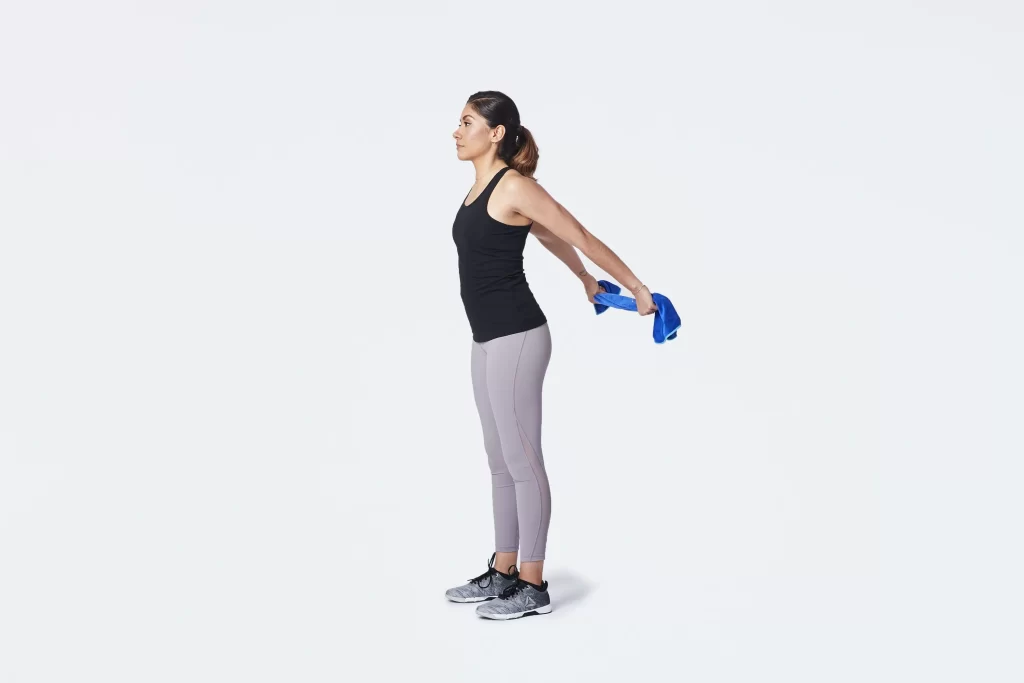
- Stand tall together with your ft shoulder-width apart.
- Extend your palms out to the sides, parallel to the floor, together along with your fingers going through forward.
- Gently squeeze your shoulder blades collectively as you deliver your palms in the back of you, permitting your chest to open up.
- You must sense a stretch throughout the front of your chest.
- Hold the stretch for approximately 20-30 seconds whilst keeping comfortable breathing.
- Slowly launch the stretch and go back to the beginning role.
Upper Back Stretch:
- Stand tall or take a seat down on a chair together along with your ft flat on the floor.
- Clasp your fingers in front of you and spherical your higher lower back, permitting your shoulder blades to separate.
- Let your head drop forward, and sense a stretch on your higher lower back among your shoulder blades.
- Hold the stretch for approximately 20-30 seconds whilst keeping comfortable breathing.
- Slowly launch the stretch and go back to the beginning role.
Neck Stretch:

- Sit or stand tall together with your shoulders comfortably.
- Gently drop your proper ear closer to your proper shoulder, aiming to extend the left aspect of your neck.
- To deepen the stretch, you may area your proper hand at the left aspect of your head and follow mild pressure.
- Hold the stretch for approximately 20-30 seconds whilst keeping comfortable breathing.
- Slowly launch the stretch and repeat on the alternative aspect.
Shoulder Stretch:
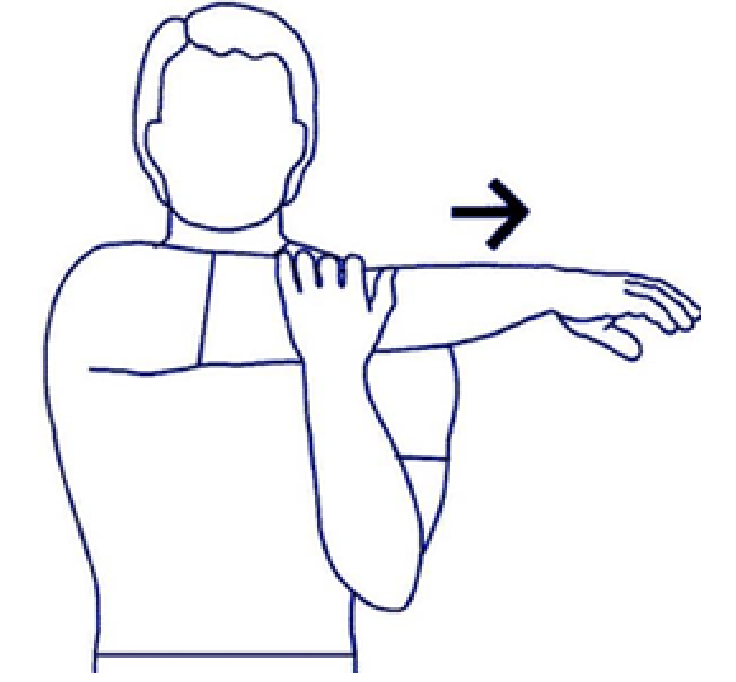
- Stand tall or take a seat down on a chair together with your flat on the floor.
- Reach one arm throughout your chest, the usage of the alternative hand to keep your higher arm.
- Gently pull your arm closer to your chest till you sense a stretch on your shoulder and the lower back of your arm.
- Hold the stretch for approximately 20-30 seconds whilst keeping comfortable breathing.
- Slowly launch the stretch and repeat on the alternative aspect.
- It’s crucial to recollect that stretches must be achieved inside a cushy variety of movements and without inflicting pain.
- If you’ve got any precise higher frame imbalances or worries, it is really helpful to discuss them with a healthcare expert or bodily therapist.
- They can offer customized guidance, determine your precise imbalances, and advocate suitable stretches and changes to deal with your character needs.
Pectoralis Stretch:
To carry out a pectoralis stretch, you may comply with the steps:

- Stand going through a doorway or nook of a wall.
- Place your forearm at the door body or wall nook at shoulder level, together along with your elbow bent at a 90-diploma angle.
- Take a small breakthrough with the foot at the identical aspect because the arm is stretched.
- Maintain an upright posture together with your chest lifted and shoulders comfortable.
- Slowly and lightly lean your frame forward, permitting your chest and shoulder to stretch.
- You must sense a cushy stretch withinside the front of your chest and shoulder.
- Hold the stretch for approximately 20-30 seconds whilst taking deep breaths.
- Relax and go back to the beginning role.
- Repeat the stretch on the opposite aspect with the aid of using switching palms and foot roles.
- It’s crucial to be aware that you must now no longer pressure the stretch or enjoy any pain.
- The stretch must be mild and inside a cushy variety of movements.
- If you’ve got any shoulder or chest accidents or conditions, it is really helpful to discuss with a healthcare expert or bodily therapist earlier than acting the pectoralis stretch to make certain it’s miles suitable for your precise situation.
Lower body stretches
Incorporating lower body stretches can be helpful in correcting lower body imbalances. Here are some lower body stretches that can help target specific areas affected by muscle imbalances:
Hip flexor stretch:

- Kneel with one knee on a mat or padded surface.
- Step one foot forward and place it on the ground, making sure the knee is directly over the ankle.
- Keeping your body straight and supported, carefully shift your body weight forward and feel the stretch in front of your knee and thigh.
- Hold the stretch for about 20-30 seconds while breathing relaxed. Slowly release the stretch and repeat on the opposite side.
Hamstring Stretching:
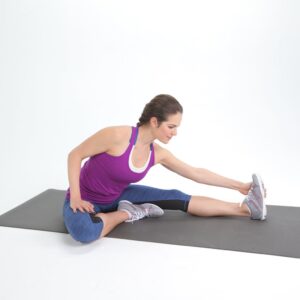
- Sit on the floor with one leg extended in front and the other leg bent so that the sole of the foot is extended against the inner thigh of the lower leg.
- Lengthen your spine and sit tall.
- Move your hips forward gently, reach for your toes, and try to keep your back straight.
- You should feel a stretch in the back of your extended leg (hamstrings).
- Hold the stretch for about 20-30 seconds while breathing relaxed. Slowly release the stretch and repeat with the other leg.
Calf Stretch:
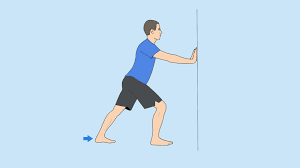
- Stand facing a wall, about an arm’s length away, with your feet hip-width apart.
- Step back with one leg, keeping it straight and the heel flat on the ground.
- Bend your front knee and lean forward, placing your hands on the wall for support.
- You should feel a stretch in the back of your calf (calf).
- Hold the stretch for about 20-30 seconds while breathing relaxed.
- Slowly release the stretch and repeat with the other leg.
- Remember to perform stretches in a comfortable range of motion and without causing pain.
- If you have any lower body imbalances or concerns, it is recommended that you speak to a health professional or physical therapist.
- They can provide personalized instruction, assess your specific imbalances, and recommend stretches and modifications to meet your individual needs.
The upper back stretches
When dealing with upper back muscles, upper back stretches can help target specific areas that are causing the imbalance. Below given are some upper back stretches that may help:
Cat-Camel Stretch:
- As above mentioned
Thread the needle stretch
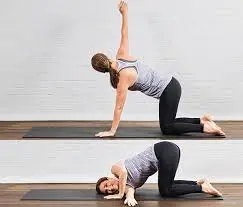
- Begin on your hands and knees in a tabletop position.
- Reach your right arm under your left arm, allowing your right shoulder and temple to rest on the ground.
- Extend your left arm forward, reaching through your left shoulder and upper back.
- Hold the stretch for about 20-30 seconds while breathing relaxed.
- Gently release the stretch and do it on the opposite side.
Shoulder blade squeeze
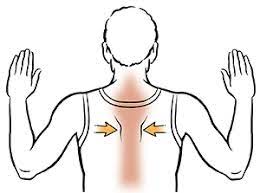
- Sit or stand straight, shoulders relaxed.
- Gently press your shoulders together, imagining that you are trying to meet them behind your back.
- Hold the pressure for a few seconds and feel the muscles between the shoulder blades stretch.
- Release the grip and repeat for several repetitions, focusing on the upper back stretch.
Door opening stretch:

- Stand in the doorway with your arms outstretched and your hands resting on the door frame at shoulder height. Step forward with one foot, keeping your body upright.
- Lean forward slightly, and feel the stretch in your chest and in front of your shoulders.
- Hold the stretch for about 20-30 seconds while breathing relaxed.
- Release the stretch gently and back to the initial position.
- Make sure to do these stretches with comfortable movements and without causing pain.
- If you have a specific imbalance or upper back concern, it is recommended that you speak with a doctor or physical therapist.
- They can provide personalized instruction, assess your specific imbalances, and recommend stretches and modifications to meet your individual needs.
Lower back stretches
When correcting lower back muscle imbalances, lower back stretches can help address the specific effects of the imbalance. Here are some lower back stretches that can be helpful:
child pose:
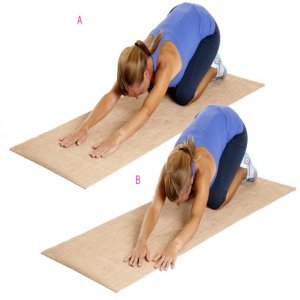
- Start on the hands and knees with the knees slightly wider than hip-width apart.
- Sit on your heels and lower your body, stretch your arms forward, and rest your forehead on the ground.
- Let your lower back relax and feel a gentle stretch in your lower back and hips.
- Hold the stretch for about 20-30 seconds while breathing relaxed.
- Release the stretch gently and back to the initial position.
Cat-Camel Stretch:

- Start on your hands and knees in a tabletop position with your hands under your shoulders and knees under your hips.
- Start by rolling your back toward the ceiling, tuck your chin toward your chest, and let your lower back tense up.
- Stay in this rounded position for a few seconds and feel the stretch in your lower back.
- Then arch your back in the opposite direction, lower your stomach to the floor, lift your chest, and look up slightly.
- Stay in this arched position for a few seconds and feel the stretch in your lower back.
- Repeat this flowing rounding and arching motion several times, focusing on the lower back.
knee to chest:
- As mentioned above
Sphinx Pose:
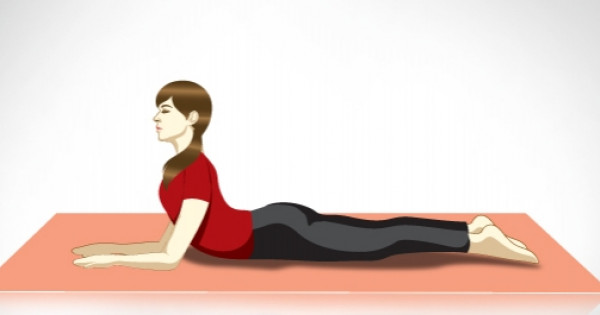
- Lie face down, resting on your forearms, elbows directly under your shoulders.
- Press your forearms into the ground and lift your chest, letting your lower back stretch slightly.
- Hold the position for about 20-30 seconds, breathing calmly.
- Release the stretch gently and back to the initial position.
- Make sure to do these stretches with comfortable movements and without causing pain.
- If you have a specific imbalance or concern in the lower back, it is recommended that you speak with a doctor or physical therapist.
- They can provide personalized instruction, assess your specific imbalances, and recommend stretches and modifications to meet your individual needs.
Strengthening exercises
Strengthening the upper body
When treating upper body muscle imbalances, incorporating strengthening exercises can help target specific areas contributing to the imbalance. Here are some upper body strengthening exercises you may find useful:
Push-ups:
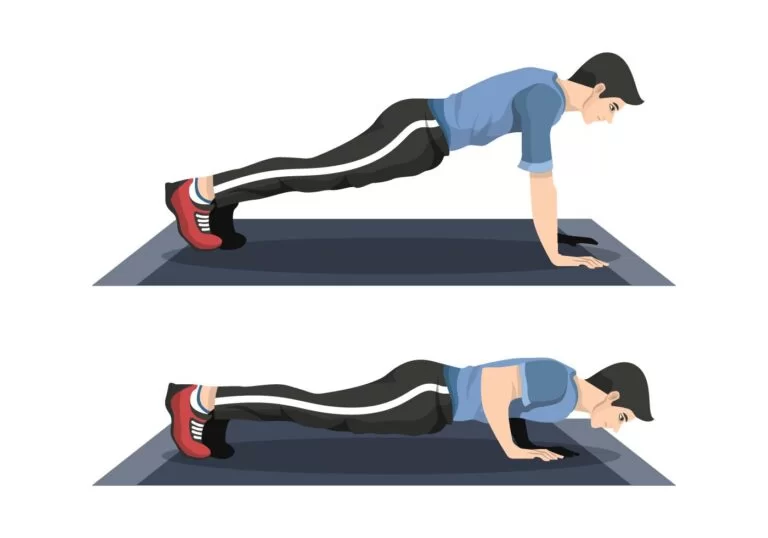
- Begin in a high plank position with the hands slightly wider than shoulder-width apart and the body in a straight line from head to heels.
- Lower your body by bending your elbows, keeping them close to your sides, until your chest is off the ground.
- Push back to the starting position, extending your arms.
- Repeat several times, focusing on maintaining proper form and engaging your chest, shoulders, and triceps.
Bent over rows
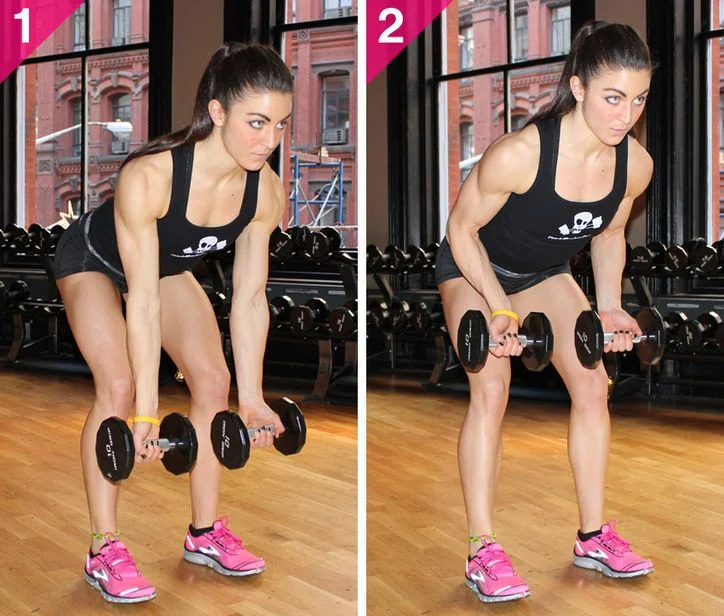
- Start with standing with the feet hip-width apart, holding a dumbbell in both hands.
- Breathe forward from your hips, keeping your back straight and your core engaged, until your torso is nearly parallel to the ground.
- Bend your elbows and pull the dumbbells up toward your body, squeezing your shoulders.
- Lower the dumbbells back down with control.
- Perform several repetitions focusing on the back muscles, including the rhomboids and lats.
Shoulder press
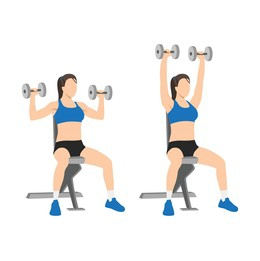
- Stand or sit with a dumbbell in each hand at shoulder height, palms facing forward.
- Brace your core and press the dumbbells overhead while extending your arms.
- Lower the dumbbells and return to shoulder level with control.
- Do several repetitions, focusing on touching the shoulders and upper arms.
Lateral pull down
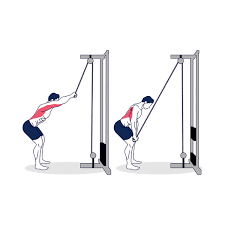
- Sit on the pull-down machine with your feet on the floor and your knees comfortably bent.
- Grab the pull-down bar with your hands shoulder-width apart and palms facing forward.
- Brace your core and pull the bar down toward your upper chest, squeezing your shoulders.
- Gently release the bar and return to the beginning position.
- Do several repetitions, focusing on the latissimus dorsi and upper back muscles.
- Remember to start with a level of weight or resistance that suits your current strength and gradually increase as you progress.
- If you have any upper body imbalances or concerns, it is recommended that you consult a health professional or certified strength and conditioning specialist.
- They can provide personalized instruction, assess your specific imbalances, and recommend exercises and modifications to meet your individual needs.
Lower body strengthening
When correcting lower body imbalances, incorporating lower body strengthening exercises can help address the specific effects of the imbalance. Here are some lower-body strengthening exercises that may be helpful:
Squat:

- Start with standing with the feet shoulder-width apart, toes slightly turned out.
- Brace your core, keep your chest up, and lower your body by bending your knees and hips as if you were sitting in a chair.
- Go as low as possible while maintaining proper form and without pain.
- Press through the heel and return to the starting position.
- Repeat several times, focusing on engaging the quadriceps, hamstrings, and glutes.
Lunges:
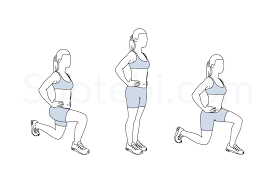
- Stand with your feet wide apart.
- Step forward on one leg, bending both knees to lower your body.
- Go as low as possible while maintaining proper form with your front knee directly over your ankle and your back knee off the ground.
- Press through the front deck and return to the starting position.
- Repeat alternately with the other leg.
- Do several repetitions, focusing on engaging the quadriceps, hamstrings, glutes, and calves.
Deadlifts:
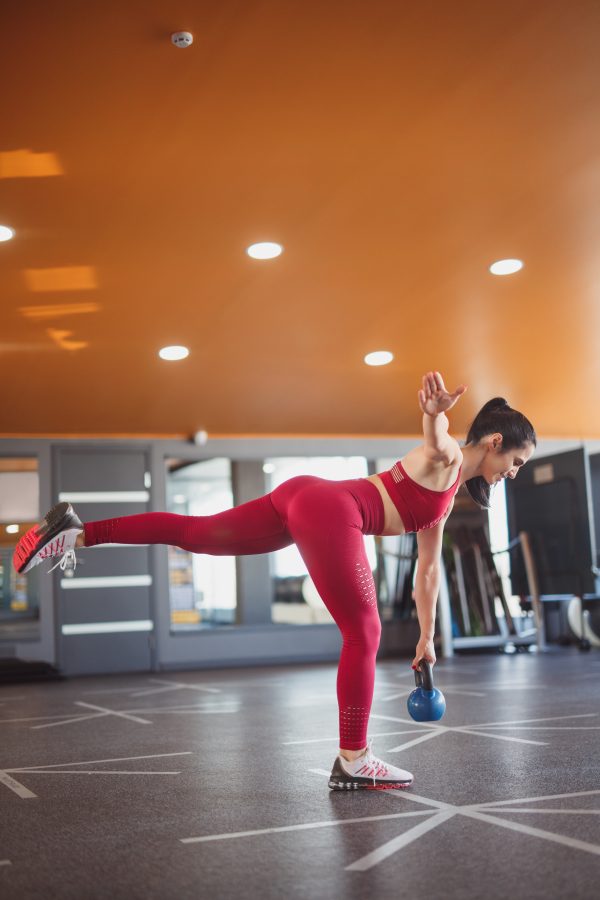
- Holding a barbell or dumbbell in front of your thighs with your palms facing your body requires you to stand with your feet apart.
- Drive forward from your hips keeping your back straight and core engaged, lowering the weights to the ground.
- Lower the weights until you feel a stretch in your hamstrings while keeping your back straight and avoiding rounding.
- Press through your heels and return to the starting position, squeezing your glutes from above. Repeat several times, focusing on engaging the thighs, glutes, and lower back.
Calf Raise:

- Stand with your feet wide apart near a wall or support for balance.
- Stand on your toes, pushing your feet through the balls.
- Hold the raised position for one second, then lower your heels back to the ground. Do several repetitions, focusing on the calf muscles.
- Remember to start with a level of weight or resistance that suits your current strength and gradually increase as you progress.
- If you have any lower body imbalances or concerns, it is recommended that you consult a physician or certified strength and conditioning specialist.
- They can provide personalized instruction, assess your specific imbalances, and recommend exercises and modifications to meet your individual needs.
Strengthening the upper back
When correcting upper muscle imbalances, incorporating upper back strengthening exercises can help target specific areas affected by the imbalance. Here are some upper back strengthening exercises that you may find useful:
Rows
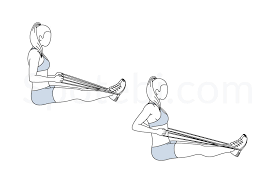
- Start with Standing with the feet hip-width apart, holding a dumbbell in both hands.
- Breathe forward from your hips, keeping your back straight and core.
- Bend your elbows and pull the dumbbells up toward your body, squeezing your shoulders.
- Lower the dumbbells back down with control.
- Perform several repetitions focusing on the back muscles, including the rhomboids and Latissimus dorsi muscles.
Reverse Flyes
- Start with standing with the feet hip-width apart, holding a dumbbell in both hands.
- Breathe forward from your hips, keeping your back straight and core.
- Extend your arms to your sides, palms facing inward.
- Squeeze your shoulder blades together as you raise your arms to your sides and focus on the muscles between your shoulder blades.
- Lower the dumbbells back down with control.
- Do several repetitions, focusing on the muscles of the upper back.
Prone Y-T-W-L exercises:
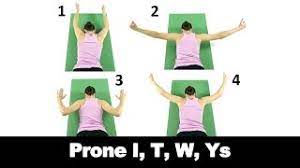
- Lie face down on a mat or exercise ball with your arms in front of you.
- Lift your chest slightly off the ground or ball, engaging your upper back muscles.
- Do the following movements in sequence, holding them for a few seconds before continuing.
- Y: Raise your arms in a Y shape, forming a “Y” with your body.
- T: Move your arms out to the sides to form a T with your body.
- W: Bend your elbows and pull your arms back to form a W shape with your body.
- L: Bend your elbows 90 degrees to form an L shape with your body. Repeat the set several times, focusing on the muscles of the upper back.
Lateral pull down

- Sit on the pull-down machine with your feet on the floor and your knees comfortably bent.
- Grab the pull-down bar with your hands shoulder-width apart and palms facing forward.
- Brace your core and pull the bar down toward your upper chest, squeezing your shoulders.
- Gently release the bar, and return to the starting position.
- Do several repetitions, focusing on the latissimus dorsi and upper back muscles.
- Remember to start with a level of weight or resistance that suits your current strength and gradually increase as you progress.
- For specific imbalances or upper back concerns, consultation with a physician or certified strength and rehabilitation specialist is advised.
- They can provide personalized instruction, assess your specific imbalances, and recommend exercises and modifications to meet your individual needs.
Lower back strengthening exercise
When treating lower back muscle imbalances, incorporating lower back strengthening exercises can help target specific areas affected by the imbalance. Here are some lower back strengthening exercises that may be helpful:
Bird Dog:
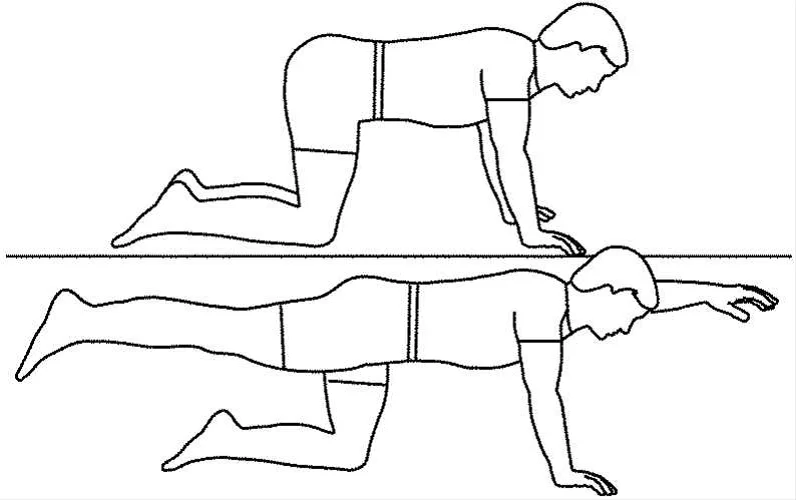
- Start on your hands and knees in a tabletop position with your hands under your shoulders and knees under your hips.
- Activate your core muscles.
- Extend your right arm forward while extending your left leg straight back, keeping your hips and shoulders parallel to the ground.
- Maintain this motion for a few seconds and then return to the starting position.
- Repeat on the opposite side, extending the left arm and right leg.
- Switch sides for several repetitions, focusing on the muscles of the lower back.
superman

- Lie face down on a mat or floor, extend your arms above your head, and keep your legs straight.
- Brace your core and lift your arms, chest, and legs off the floor at the same time, trying to create a slight arch in your lower back.
- Maintain this motion for a few seconds and then lower back to the starting position.
- Do several repetitions, focusing on the muscles of the lower back.
Deadlifts
- As mentioned above
Back extensions:
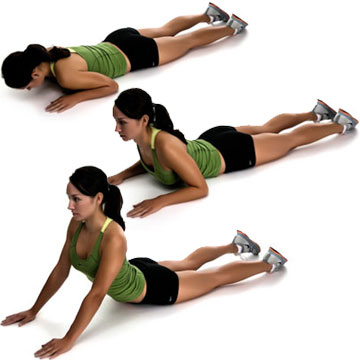
- Lie face down on a mat or exercise ball with your legs extended and your hands behind your head.
- Brace your core and lift your upper body off the ground, squeezing your lower back.
- Maintain this motion for a few seconds and then lower back to the beginning position. Do several repetitions, focusing on the muscles of the lower back.
- Remember to begin with proper form and listen to your body.
- If you have a specific imbalance or concern in the lower back, it is recommended that you speak with a physician or certified strength and rehabilitation specialist.
- They can provide personalized guidance, assess your specific imbalances, and recommend exercises and modifications to meet your individual needs.
Postural exercises:
Exercises that focus on improving posture and alignment can help correct imbalances caused by poor posture. For example, scapular retraction, scapular compression, and chin lift.
Postural exercises can help correct muscle imbalances by improving posture, strengthening weak muscles, and stretching tight muscles.
Balance and coordination
Balance and coordination exercises can help correct muscle imbalances by promoting stability, proprioception (awareness of body position), and coordinated movement. Here are some exercises to help with balance and coordination when muscle imbalances occur:
single leg stance
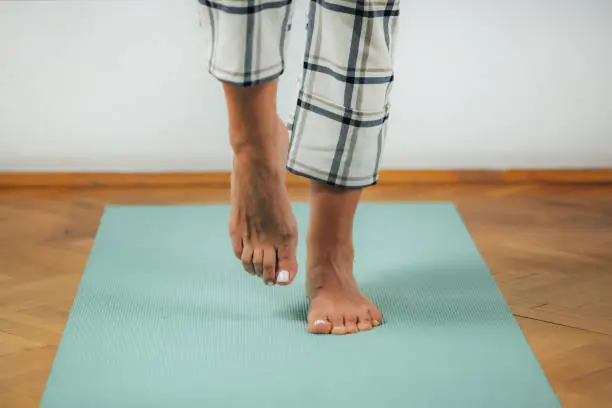
- Stand tall with your feet together.
- Lift one leg off the ground and swing with the opposite leg.
- Hold the pose for as long as possible while maintaining proper alignment and balance.
- Switch legs and repeat.
- To continue the exercise, close your eyes while balancing on one leg, testing your proprioception and balance control.
Balance board or stability board exercises:
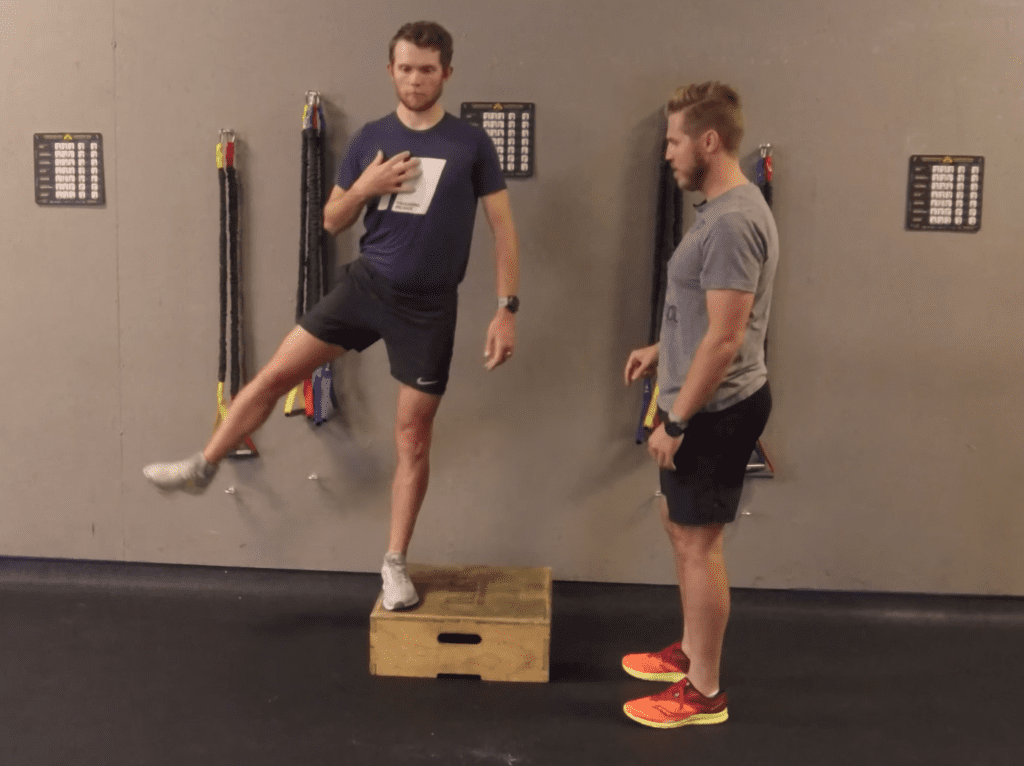
- Stand on a balance board or stability board with your feet shoulder-width apart.
- Use your core and keep your balance as the board or puck moves under you.
- Various movements can be made on the board or puck, for example gently from side to side, front to back, or small turns.
- Start with small movements and progress as your balance and coordination improve.
Tai Chi:
- Tai Chi is a low-impact, flowing martial art that emphasizes balance, coordination, and mindfulness.
- It involves a series of slow, controlled movements as you shift your weight from foot to foot and coordinate upper body movements.
- Practicing Tai Chi can improve balance, stability, and overall body coordination.
Proprioceptive exercises:
- Proprioception refers to your body’s ability to sense your position and movement in space.
- Exercises that challenge your proprioception can help improve muscle imbalances and coordination.
- Examples include standing on an unstable surface (such as a foam pad or BOSU ball) and performing controlled movements such as reaching, throwing, or catching objects while maintaining balance.
Yoga or Pilates:

- Yoga and Pilates include a variety of balance and coordination exercises that target muscle imbalances and increase stability.
- These practices usually involve a combination of static and dynamic poses that focus on core engagement, body alignment, and controlled movements.
- When doing balance and coordination exercises, start with exercises that match your current skill level and gradually progress as you gain strength and stability.
- It is always recommended to consult a health professional or certified exercise professional, such as a
- physical therapist or personal trainer, for guidance on appropriate exercises and modifications based on your muscle imbalances and fitness.
Functional Movement Training:
- Functional exercises mimic daily activities or sports-related movements to improve muscle coordination and balance during functional tasks.
- These exercises can help integrate corrected muscle imbalances into functional movement patterns.
- It is important to follow the instructions of a physical therapist or doctor while doing these exercises.
- He knows how to provide proper instruction, ensure proper form and technique, and progress through exercises as needed based on your progress.
- Consistency and regular practice of these exercises are essential to effectively correct muscle imbalances.
How to prevent muscle imbalance?
Preventing muscle imbalances is crucial for maintaining optimal musculoskeletal health and reducing the risk of injuries. Here are some strategies to help prevent muscle imbalances:
- Balanced strength training: Incorporate a well-rounded strength training program that targets all major muscle groups. Focus on exercises that work both agonist and antagonist muscles (opposite muscle groups) to promote balanced strength development.
- Core stability training: Strengthening the core muscles, including the abdominals, back muscles, and hip stabilizers, can help maintain proper alignment and stability throughout the body. A strong core muscle provides stability for overall muscle balance.
- Proper form and technique: When performing exercises and engaging in physical activities, ensure you maintain proper form and technique. This includes using correct posture, maintaining alignment, and executing movements with control. Improper form can contribute to muscle imbalances and increase the risk of injury.
- Stretching and flexibility exercises: Regular stretching helps maintain or improve flexibility, which is essential for muscle balance. Include dynamic stretches as part of your warm-up routine and static stretches after your workout to target major muscle groups.
- Postural awareness and ergonomics: Be mindful of your posture throughout the day, whether you’re sitting, standing, or engaging in activities. Maintain proper alignment, avoid prolonged static positions, and use ergonomic equipment to support good posture.
- Cross-training and variety: Engage in a variety of physical activities and exercises to challenge different muscle groups. Cross-training not only helps prevent overuse injuries but also promotes overall muscle balance by engaging muscles in different ways.
- Gradual progression and rest days: Progressively increase the intensity, duration, and frequency of your workouts to avoid sudden excessive stress on certain muscles. Also, allow adequate rest and recovery between workouts to give your muscles time to repair and adapt.
- Regular movement breaks: If you have a sedentary job or lifestyle, take frequent movement breaks to avoid prolonged sitting or repetitive postures. Incorporate stretching, walking, or light exercises to keep your muscles active and prevent imbalances caused by prolonged static positions.
- Listen to your body: Pay attention to any signs of muscle imbalance, discomfort, or pain. If you notice any imbalances or symptoms, consult a healthcare professional or a qualified trainer who can provide guidance and address the issue.
Remember that prevention is key, and maintaining overall muscle balance requires a holistic approach that includes a combination of strength training, flexibility exercises, postural awareness, and a variety of physical activities.
Summary
Muscle imbalances occur when there is an inequality in strength, flexibility, or coordination between opposing muscles or muscle groups. To prevent muscle imbalances, it is important to maintain balanced strength training, focus on core stability, use proper form and technique, incorporate stretching and flexibility exercises, be mindful of posture and ergonomics, and engage in a variety of physical activities. Listening to your body and seeking professional guidance when needed is also essential.
FAQs
Imbalance can be caused by muscle overload and fatigue, as well as weak or unstretched muscles. Prolonged sitting also causes persistent muscle imbalances. This is especially true as it develops, where the back muscles become long and weak while the abdominal muscles shorten.
Warning signs of muscle imbalances include:
Train only one sport or only one muscle group. Bad attitude. A significant difference in strength, flexibility, or balance on one side of the body versus the other.
Imbalances can often be corrected through exercise. A study of top fencers conducted in 2015 showed that a lot of kicking in fencing causes muscle imbalances in the lower and upper limbs. By improving global muscle balance, fencers’ lower limb balance improved during sports.
Muscle imbalances and overuse injuries in sports are very common. Anterior knee pain, patellofemoral pain syndrome, patellar tendon strain, patellar strain, hip strain, and rotator cuff strain are conditions that I regularly treat in my athletes.
A musculoskeletal specialist may examine a person to help make this determination. Common muscle problems involve; Strains from an acute injury (e.g. hamstring strains, hip flexor/iliopsoas strains) Overuse problems (e.g. shin splints, tennis elbow)

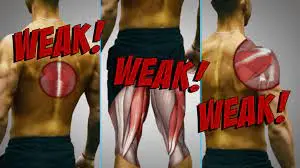
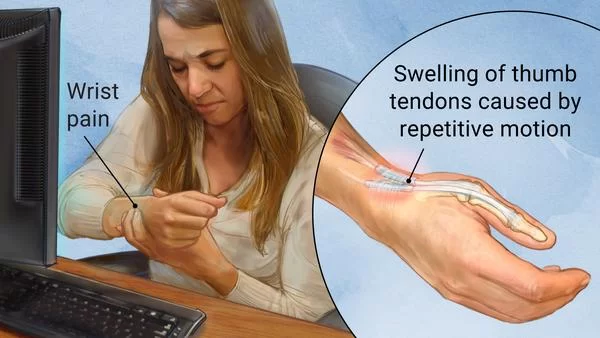
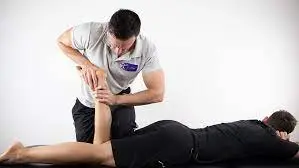
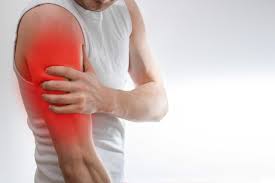

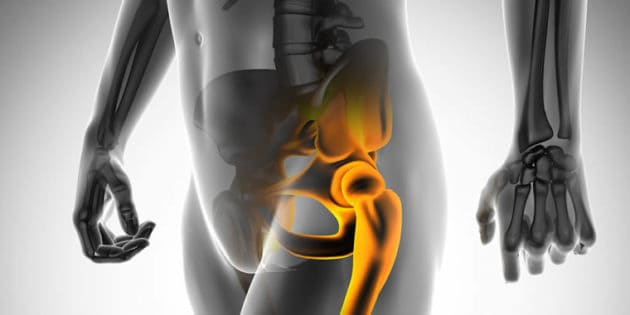
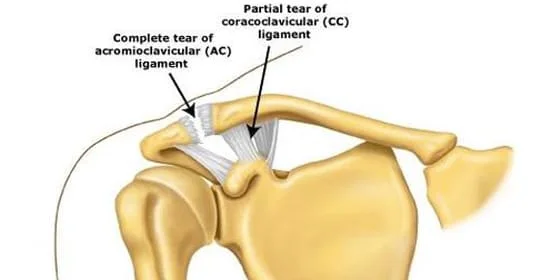
26 Comments